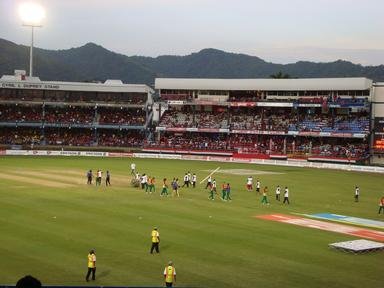Quiz Answer Key and Fun Facts
1. The current Wanderers Stadium is properly called the New Wanderers Stadium. The original Wanderers was built in 1888 in a park named after the President of the Transvaal who had arranged to make the land available for the purpose. What was the location of the first Wanderers Stadium?
2. By the 1920s, it became clear that the growing railway station would need to reclaim the land used by the Old Wanderers Stadium, so the club purchased land in the nearby suburb of Ilovo where they planned to move their club's buildings and grounds. Originally called Kent Park, after whom or where was it named?
3. The first test match played in the Wanderers Stadium took place in 1956. South Africa played against England. What was the result of the test?
4. In the third match of a four-test series in 1970, South Africa beat Australia by 307 runs at Wanderers. After this series, how long was it before these two teams next faced each other in Johannesburg?
5. The second test of England's 1995-6 tour of South Africa was played at Wanderers Stadium. The drawn test was notable because an English player batted for 10 hours to force the draw, setting a scoring record for the stadium. Who was this English hero?
6. In 2003, Wanderers hosted the final of the eighth ICC World Cup, which was the first to be played in Africa. Which country successfully defended their title in this match?
7. On 29 September 2004, the Wanderers Clubhouse was almost completely destroyed by which of these?
8. On 12 March 2006 Australia and South Africa played an ODI at Wanderers. Australia batted first, setting a record score of 434 runs for the loss of 4 wickets. What was the result of the match?
9. T20 (or, more fully, Twenty20) cricket is a recently-developed form of the game in international competition. Each team bats for 20 overs, meaning they face 120 balls off which they can score. On 11 January 2015, West Indies were set a target of 231, which they managed to chase down with four balls to spare when Darren Sammy hit a ball over the rope for six runs. What was their winning score?
10. On 18 January 2015, an ODI between South Africa and the West Indies played at Wanderers saw AB de Villiers equal or set a number of records. Which of these did he NOT achieve in this match?
Source: Author
looney_tunes
This quiz was reviewed by FunTrivia editor
1nn1 before going online.
Any errors found in FunTrivia content are routinely corrected through our feedback system.
